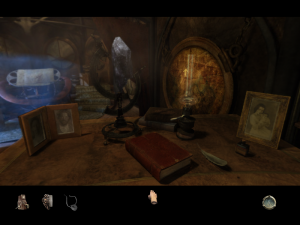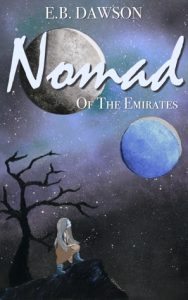Lots of people  have talked about the repetitive, unimaginative products Hollywood has been offering us lately…and with much more analysis and detail than I could.
have talked about the repetitive, unimaginative products Hollywood has been offering us lately…and with much more analysis and detail than I could.
I just want to make a brief comment about a recent reboot that high-lights just how desperate and irrational this phobia of original concepts is.
Magnum, PI
Dad introduced us to this show as part of “pop culture” class. I also watched some episodes on my own, and enjoyed the mystery, the adventure, the detective work, and the charm of Tom Selleck.
Here’s the premise, in my own words:
Thomas Magnum, a Vietnam veteran, now works as a private investigator in Hawaii. He ostensibly works for the reclusive author Robin Masters, whose estate he lives at, and has a strained relationship with Masters’ estate caretaker, Higgins.
Higgins is an older man, a veteran of the First World War, and a straight-laced counterpoint to Magnum’s Hawaiian-shirt-wearing energy.
There. Lots of room for plot, as episodes explored Magnum’s war experiences (his two best friends served alongside him), enjoyed the tropical setting, and pitted the mirthless, proper Higgins against Magnum’s fun-loving demeanor and eclectic working schedule.
The Reboot
CBS has brought the show back – well, as an updated, readjusted form of itself.
Thomas Magnum is now a Hispanic veteran of Afghanistan. This is great. Hispanics can be good-looking, there’s no reason a Hispanic veteran wouldn’t live in Hawaii (and decide to be a PI), and the casting openly acknowledges that you can’t re-create Tom Selleck, so why try?
Just do your own thing, and do it well.
The bigger problem is that “Jonathan” Higgins has been turned into “Juliet” Higgins. As Laura Finch in WORLD Magazine put it, “I think we all know how that story ends.”
And that’s the problem.
This is “supposed” to be Magnum, PI. Part of the whole dynamic there is the conflict between Higgins and Magnum…the old man and the young man…the Brit and the American…the class act and the bend-the-rules…the suit and the Hawaiian shirt…the straight-faced professional and the emotionally-invested professional.
The bickering of two men who didn’t see eye-to-eye, and the grudging respect they gain for each other through long seasons of working together (and saving each other’s lives) was a profound and unique dynamic.
Now…there’s Magnum and Juliet.
As soon as it’s a man and a woman, you have sexual tension. That’s just how it works. A male and female can’t have the same platonic working relationship that two people of the same gender can.
The writer in WORLD already spelled it out. We can all smell where this story is heading. Even if the writers decide to toy with our expectations, and these two don’t get together, the fact that there’s this possibility turns all their interactions on their heads.
Now, a “grudging respect” might be “flirty bickering”. Juliet complaining about Magnum’s methods might be a romantic rebuttal, or an emotionally confused statement (she’s attracted, but doesn’t want to be, so it taints her professional decision-making…or vice versa) – rather than a plain statement about their different working mentalities.
(The new writers also want her to be a “strong female”, with MI6 experience and the skills to defend herself, thank you very much. Whatever, people.)
Another, Again…Except Not
Could a story about a man and a woman in antagonistic professional circumstances be compelling? Could the tale of how they bond over shared adventures and intrigue (both pulling their weight – in a masculine sense – ala Mr. Incredible and the kick-butt ElastaGirl) be entertaining and meaningful?
Sure. But it’s not the story of the original Magnum, PI.
I enjoyed the original. I enjoyed how Higgins and Magnum didn’t really like each other, thought the other one was much too ____, but still had each other’s backs in every sticky situation. It was a uniquely male dynamic, and refreshingly so.
In private, Magnum would troll Higgins, and Higgins would scold Magnum. But when bad stuff hit the fan, they put their personal relationship in the back seat, and worked together to win.
Turning one of these characters into a woman automatically makes the personal relationship a key issue. Women are much more “personal relationship” oriented than men are…and men forming relationships with women have a much harder time not making those relationships “personal” (think of the deep, innate urge to save the princess – even if she’s a jerk).
Even if Magnum and Juliet are both mature, rational adults, you can’t put a man and a woman in a room and not have tension. Further, they’re going to approach whatever problems they face from a male or a female perspective – regardless of whatever cultural, demographic, religious, philosophical, and experiential differences they might have with each other.
To pretend this new show is Magnum, PI, but to change this foundational element, is both disappointing and confusing.
I probably wouldn’t watch the new show either way, because we don’t have a television. (And my brother got more exercised about the gender-swap than I did.) But I really wanted to connect this new show to the issue I started with…the regurgitation of media.
Just do your own thing, and do it well!
What if, once upon a time, a writer had a new premise idea for a great TV show:
Tomas Colt is a Hispanic former SEAL turned private investigator, using his combat skills in the private sector. He lives on the estate of a reclusive author, and has a tense relationship with the estate’s caretaker Juliet, who doesn’t approve of his professional methods and standards.
Little does he suspect she is former MI6, and critiques his detecting and problem-solving techniques because of her own experience in the field…
Well? Why didn’t they do that?
Why did they say, “This is that exact same show you used to love, except with younger actors and good graphics…and also diversity”?
Instead of, “If you loved Magnum, PI, you’ll also love this new show that has some similar elements, but is exploring its own themes for a modern audience! Please tune in to Colt, PI!”
Why? Right when writing coaches and analysts around the internet are bemoaning the lack of originality and risk-taking in modern media…why would they take an old show, change one of its foundational tenants, and try to feed us the same old thing only more diverse?
Just do your own thing, and do it well!
I just watched a YouTube video about how the live-action Beauty and the Beast did the same thing…”fixed” non-existent problems of sexism and bigotry, and created new problems of character motivation, plot inconsistency, irrational bigotry, and emotional impact. (language cautions)
And in case you think I’m a cynic who just hates all female characters, try this YouTube video that explains we just want good female characters…and to not have the writers’ virtue-signaling meta-agenda shoved down our throats.
Sure, let’s make new stories. But let’s make new stories. And let’s be intentional about the dynamics, character motivations and interactions, and thematic assumptions that go into our stories.
Do your own thing…just do it well.
Header picture is from WORLD Magazine.
 Kimia Wood currently lives somewhere in the American midwest, bracing for the collapse of society by knitting, baking, writing, hobby-farming, and reading as much Twitter as possible before the web goes dark.
Kimia Wood currently lives somewhere in the American midwest, bracing for the collapse of society by knitting, baking, writing, hobby-farming, and reading as much Twitter as possible before the web goes dark.
Subscribe to the mailing list for a FREE e-copy of her post-apocalyptic adventure novella Soldier! You’ll also receive periodic updates of her latest reading and writing adventures.













